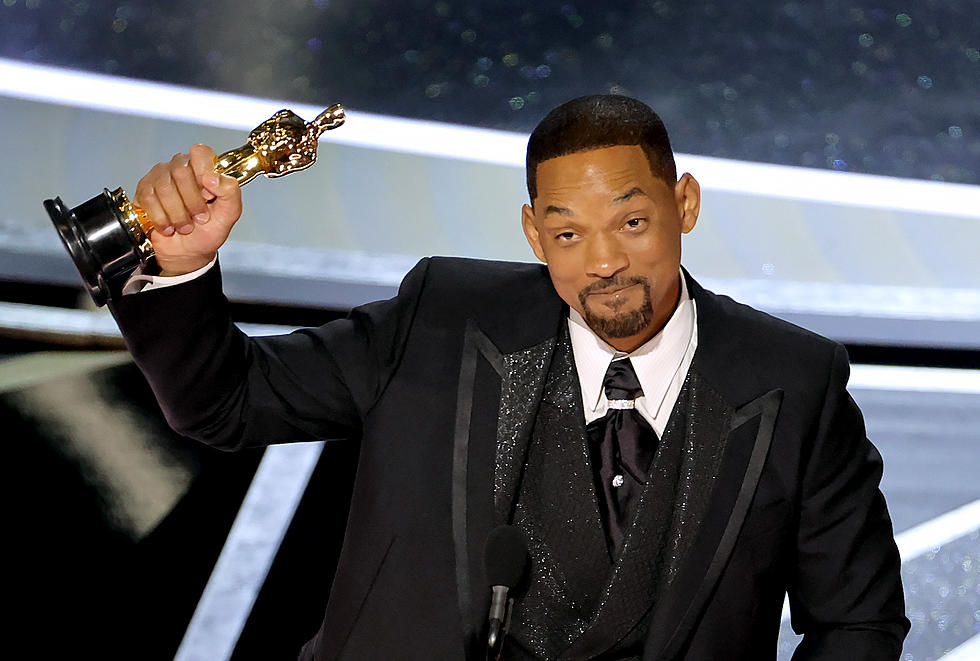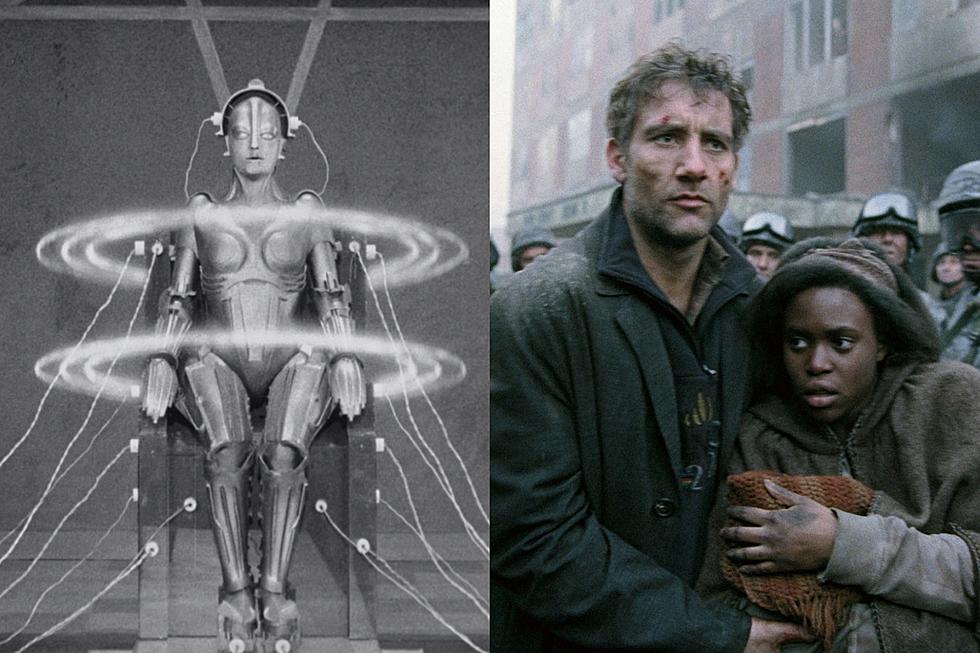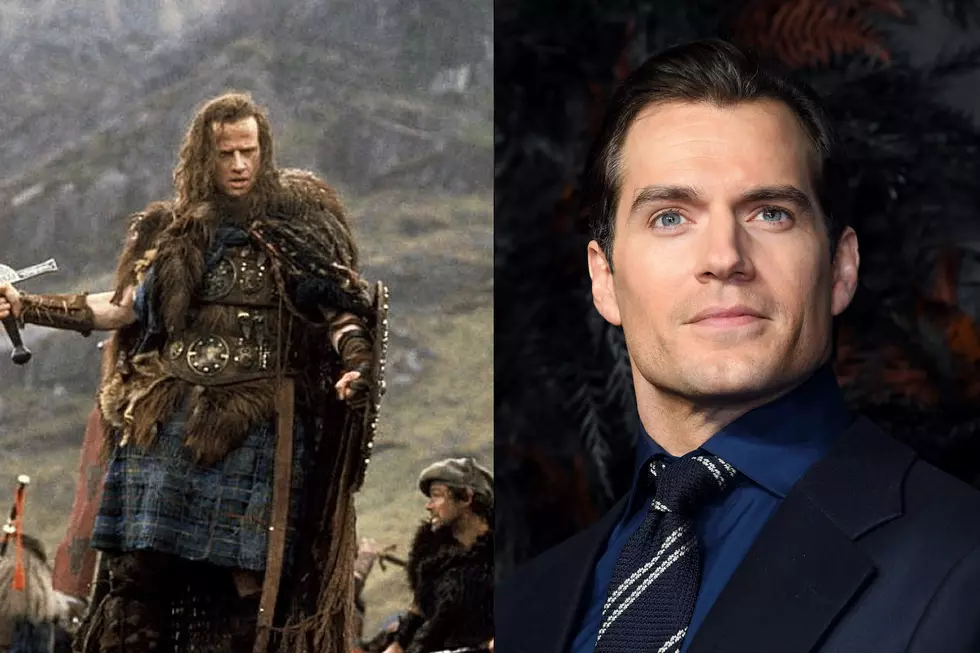
The 12 Most Mind-Blowing Long Takes in Movie History
Sam Mendes’ buzzy World War I epic 1917 mystified viewers with its appearance of one unbroken shot for the whole movie. In fact, the effect was achieved with multiple free-range cameras that were moved onto wire mounts and moving vehicles. It’s an ambitious task, but the results can be incredible. “Until you actually see it on a screen, you don’t realize how immersive it is and how that technique draws you into it,” Mendes told Entertainment Weekly.
Not every movie can pull off a one-shot, but several movies utilize one or more long take scenes to create suspense, establish setting, and raise emotional stakes. Here are twelve movies that pull off the long-take technique in expert fashion.
1. Rope (1948)
Alfred Hitchcock’s psychological thriller Rope deceives you by hiding many of its cuts in plain sight. Every 10 minutes — the length of a film magazine — Hitchcock directed the camera into a man’s jacket or the back of a furniture piece while he sneakily made a cut. Well-played, Hitchcock. The real-time effect gives Rope the feeling of a suspenseful live play. It was, in fact, based on the 1929 play by Patrick Hamilton.
2. Touch of Evil (1958)
One of Orson Welles’ most iconic sequences, the long take in Touch of Evil is three minutes and twenty seconds. It may be one of the shorter scenes on this list, but the ticking time-bomb element makes it feel ages long. The scene is regarded by many to be one of cinema’s greatest opening shots. They even mention it in Robert Altman’s The Player, during the movie’s long take opening sequence. That’s some one-shot-ception right there.
3. Weekend (1967)
Weekendfeatures a particularly impressive traveling shot that’s 7 minutes and 25 seconds of pure hell. The scene from Jean Luc Godard’s dark comedy is a sprawling look at a sticky traffic jam, taking the time to assess each driver’s response to the situation. It all culminates in the scene’s chilling conclusion, a car accident that leaves several bloodied bodies on the road. If the incessant sound of cars honking didn’t drive you crazy already, it will after you watch this scene.
4. The Passenger (1975)
While many tracking shots come towards the beginning of the movie, The Passenger’s seven minute-long take arrives near the end. And get this — because the scene was moving from an interior location to an exterior one, the lighting had to be just right. This meant that the scene could only be shot between the times of 5pm and 7:30pm. Not to mention, the location in Spain was extremely windy and dusty. And yet somehow, Michelangelo Antonioni got his shot.
5. Goodfellas (1990)
The Goodfellas Copacabana tracking shot was revolutionary in that it was filmed during the earliest days of the Steadicam. It follows gangster Ray Liotta and Lorraine Braco as they enter the Copacabana nightclub in New York City. At the time it was filmed, the nearly three-minute scene was the longest scene shot on Steadicam in movie history. It took eight tries to get the shot right, and it was completed in half a day’s time.
6. The Player (1992)
The Player’s eight-minute opening sequence is a technical feat in and of itself. Robert Altman successfully recreates the manic hustle of a Hollywood studio in one impressive take. The scene includes some very meta dialogue about the long take in Orson Welles’ Touch of Evil, as the characters on screen move through a long take themselves. Its self-referential nature helps establish the sharp, satirical tone for the rest of the movie.
7. Boogie Nights (1997)
The first three minutes of Boogie Nights basically tell us all we need to know for the rest of the movie. The scene introduces us the dazzling, dizzying world of nightlife in the late 1970’s. Paul Thomas Anderson packs a ton of character relationships and world-building into such a short amount of time. It’s the perfect introduction to Boogie Nights, putting you right in the middle of its maddening environment from the get-go.
8. Timecode (2000)
Timecode is comprised of entirely one shot. Well, technically four. It was shot on four simultaneously running digital cameras, and the footage is presented split-screen in real time. The soundtrack clues you in on which quarter of the screen you should be paying attention to at any given time. A total of 15 takes were filmed, and since the dialogue was mainly improvised, that means there are multiple versions of Timecode in existence.
9. Russian Ark (2002)
Alexander Sokurov’s 2002 historical drama was actually the first feature-length film shot on digital to be created using only a single take. Following a 19th-century aristocrat who wanders through a Russian museum only to find he can interact with the historical figures, Russian Ark features a whopping 33 rooms and 2,000 cast members. It’s a true one-shot movie, and the final product took four attempts total. Not bad for an extravagant 90-minute period piece.
10. Atonement (2007)
While it took Christopher Nolan’s Dunkirk 106 minutes to tell the story of the notorious battle, it took Joe Wright’s Atonement five minutes. Embedded in the much larger historical context of WWII, the long take in Atonement stands alone as a poignant, horrific portrait of war. With the amount of action and complex moving parts, this scene is a technical marvel — and it’s just five minutes of the movie.
11. Gravity (2013)
Alfonso Cuarón’s Gravity boasts a 17-minute opening shot. But if that’s not impressive enough for you, it’s also set in space! And there’s, like, hurtling pieces of space debris!To pull off all these elements so well is no small feat, but cinematographer Emannuel Lubezki has a knack for this sort of thing. He would go on to use long-takes again, with Alejandro González Iñárritu’s Birdman the following year.
12. Birdman (2014)
Alejandro González Iñárritu played a trick on our eyes with 2014’s Birdman, a film that gives the illusion of being filmed in one take. The movie was actually comprised of multiple shots, but with the help of some discreet editing and color grading, the long takes flowed together in a seamless way. The result emphasizes Riggan Thomson (Michael Keaton)’s downward spiral into madness in a gripping way.
Gallery — The Best Cliffhanger Endings in Movies:
More From NewsTalk 940 AM










